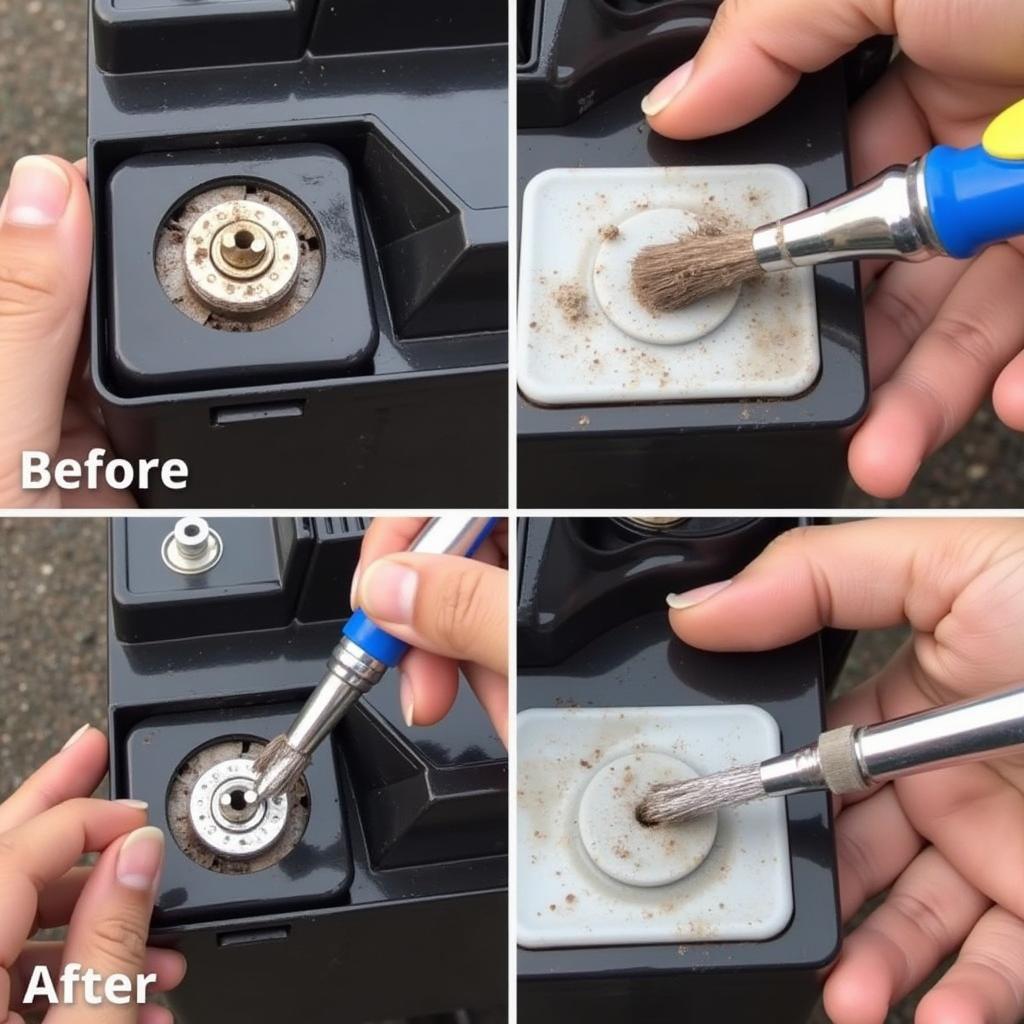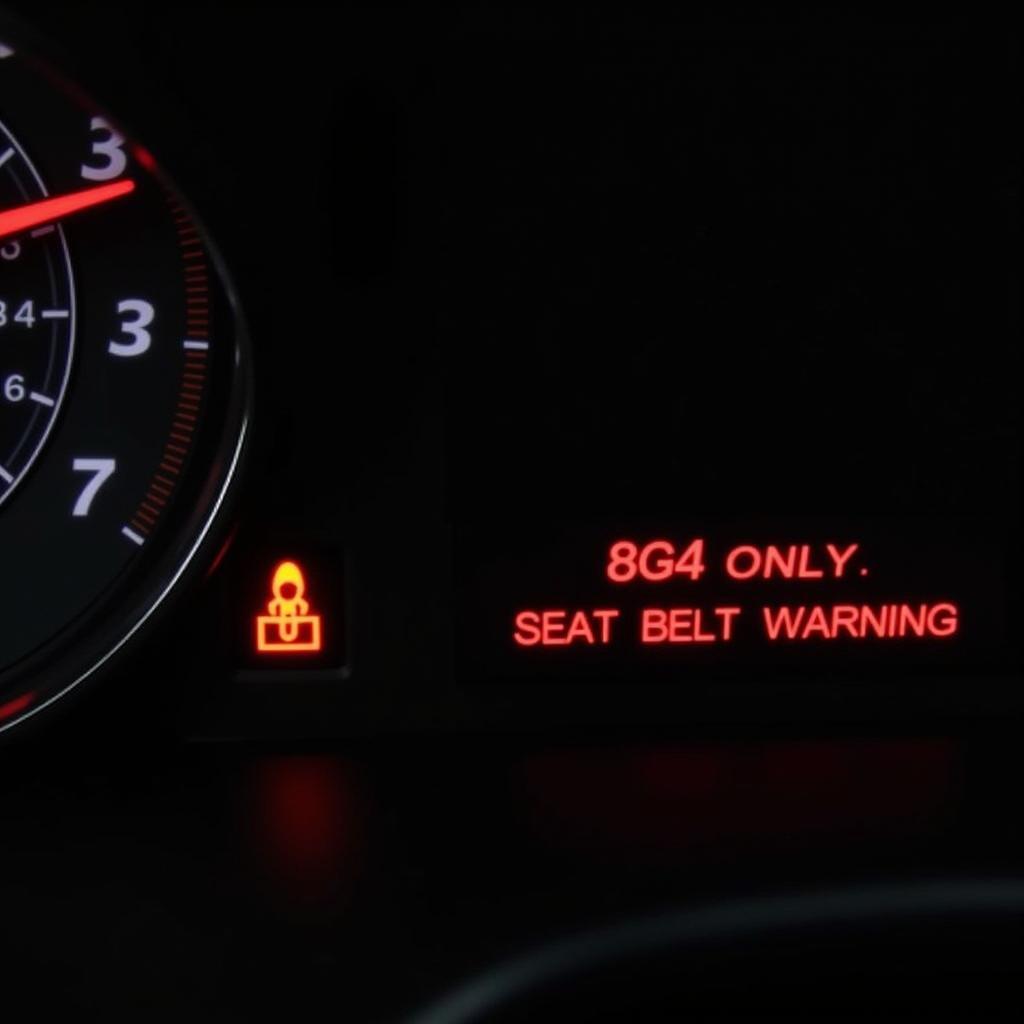A dead car battery is the most common reason a car won’t start. But several other issues can also leave you stranded. This guide will help you diagnose the problem and get your car back on the road, covering everything from simple fixes to more complex issues that may require professional assistance. Let’s get started!
Common Causes of a Car Dead Situation
There are various reasons why your car might be dead, ranging from a simple dead battery to more complex electrical or mechanical issues. Knowing the common culprits can save you time and potentially money.
- Dead Battery: This is the most frequent reason for a dead car. Batteries have a limited lifespan, and various factors can shorten it, including extreme temperatures, excessive short trips, and parasitic drains. Signs of a dead battery include dimming headlights, slow cranking, and clicking sounds when turning the key.
- Alternator Issues: The alternator recharges the battery while the engine is running. A faulty alternator won’t charge the battery, eventually leading to a dead car. You might notice your check engine battery light illuminated.
- Starter Motor Problems: The starter motor cranks the engine to start it. A failing starter can prevent the engine from turning over, leaving your car dead. Listen for a single click or a rapid clicking sound when trying to start.
- Bad Ignition Switch: The ignition switch powers various electrical components, including the starter. A faulty switch can prevent the car from starting.
- Fuel System Issues: While less common than a dead battery, a lack of fuel or a faulty fuel pump can also prevent your car from starting.
- Electrical Problems: Wiring issues, corroded connections, or blown fuses can disrupt the electrical flow needed to start the engine. Check for signs of loose battery connections.
What to Do When Your Car is Dead
When faced with a dead car, don’t panic! Here’s a step-by-step guide to help you troubleshoot the problem:
- Check the Battery: Examine the battery terminals for corrosion. Clean them with a wire brush and baking soda solution if necessary.
- Try Jump Starting: If you suspect a dead battery, jump-starting your car is a good first step. Make sure you connect the jumper cables correctly.
- Listen for Clicking Sounds: When you turn the key, listen carefully. Clicking sounds can indicate a starter or battery problem.
- Check the Fuel Gauge: Ensure you have enough fuel. A simple oversight can sometimes be the culprit.
- Inspect the Dashboard Warning Lights: Pay attention to any illuminated warning lights, such as the check engine battery and oil light on. They can provide valuable clues about the problem.
 Using a Car Diagnostic Tool
Using a Car Diagnostic Tool
Remote Diagnostics and Programming Solutions
Modern technology allows for remote diagnostics and programming, offering convenient solutions for certain car problems. Specialized technicians can access your car’s computer system remotely to diagnose issues and even reprogram certain modules. This can be especially helpful for software-related glitches or updates. If you suspect a more complex issue, consider seeking professional remote diagnostic services. They can often pinpoint the problem quickly and efficiently.
Why is My Car Battery Draining When Off?
A common issue contributing to a dead car is parasitic battery drain. This occurs when electrical components continue to draw power even when the car is off. Some common culprits include interior lights, faulty door switches, and aftermarket accessories.
 Cleaning Car Battery Corrosion
Cleaning Car Battery Corrosion
Prevention is Key: Maintaining Your Car’s Electrical System
Regular maintenance can help prevent a dead car situation. Here are some proactive steps you can take:
- Regular Battery Checks: Get your battery tested periodically, especially in extreme temperatures.
- Clean Battery Terminals: Keep the battery terminals clean and free from corrosion.
- Limit Short Trips: Short trips prevent the alternator from fully recharging the battery.
- Turn Off All Accessories: Ensure all lights and accessories are turned off before exiting your vehicle.
- Address Warning Lights Promptly: Don’t ignore dashboard warning lights. They are often early indicators of potential problems.
“Regular battery maintenance is often overlooked,” says John Smith, Lead Automotive Technician at Advanced Auto Solutions. “A simple battery test can save you the frustration of a dead car.” Similarly, Jane Doe, Senior Electrical Systems Engineer at AutoTech Innovations, adds, “Addressing warning lights promptly can prevent minor issues from escalating into major repairs.” Remember, preventive maintenance can significantly extend the life of your car’s electrical components and minimize the risk of a dead car situation.
Conclusion
A dead car can be a frustrating experience, but understanding the common causes and taking proactive steps can help you avoid this situation. By performing regular maintenance, addressing warning lights promptly, and understanding the basics of troubleshooting a dead battery, you can keep your car running smoothly. If you have a VW and experience a warning light issue, check out our article on the vw golf mk5 brake pad warning light. For those with an Alpine car radio, we have resources on alpine car radio bluetooth connectivity.
FAQ
- How long does a car battery last? Typically, a car battery lasts between three and five years.
- Can I jump-start my car with any other car? Yes, as long as the other car has a 12-volt battery.
- What are the signs of a bad alternator? Dimming headlights, flickering dashboard lights, and a whining sound from the engine bay.
- Is it safe to drive with a bad alternator? No, driving with a bad alternator will eventually drain your battery, leaving you stranded.
- How can I prevent my car battery from draining? Turn off all accessories when the car is off, and address parasitic drains promptly.
- What does it mean if my car clicks when I try to start it? This usually indicates a dead battery or a problem with the starter motor.
- Can remote diagnostics fix a dead car battery? Remote diagnostics can identify the cause of a dead battery, but it cannot physically recharge or replace it.


